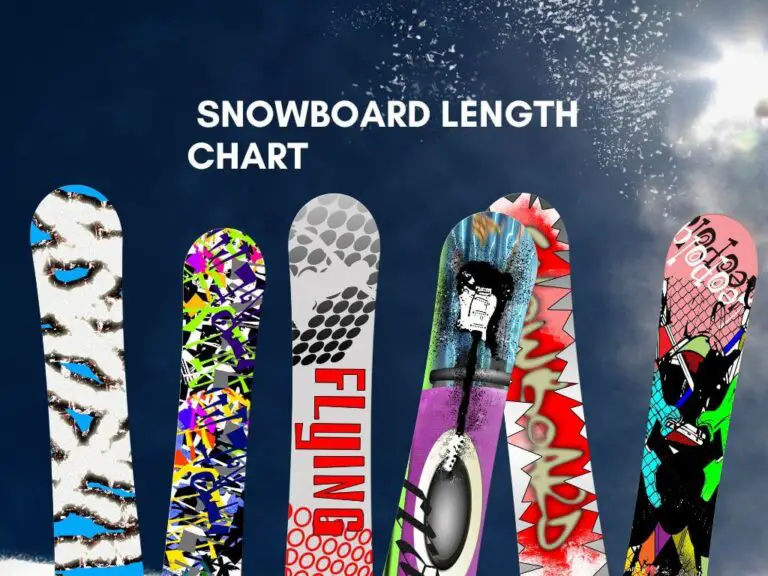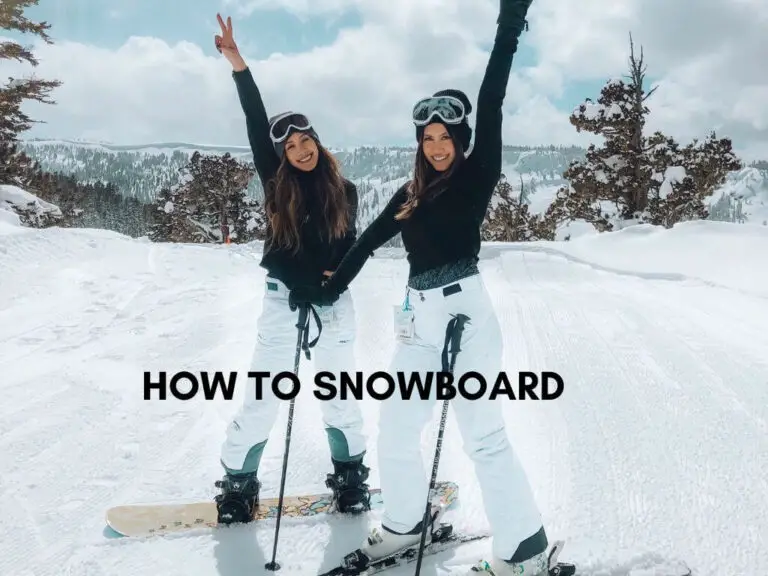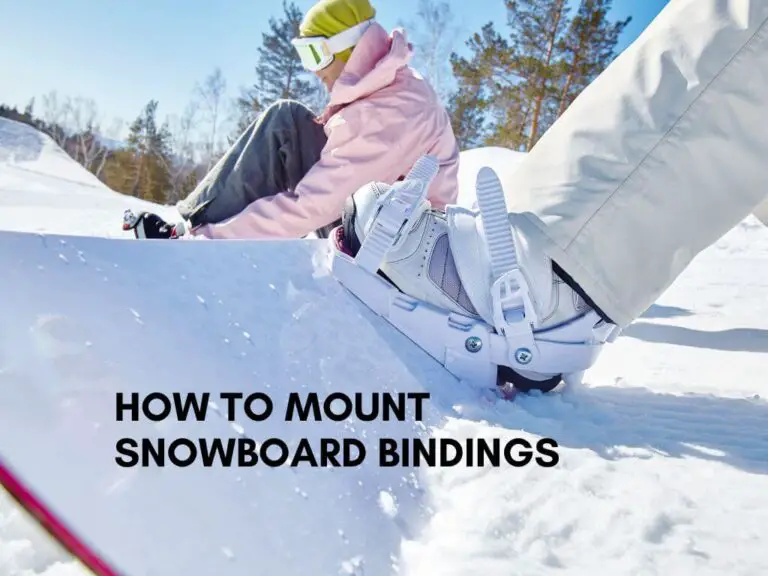Choosing the right snowboard length is one of the most critical decisions you’ll make as a rider. Whether you’re a beginner carving your first turns or an experienced shredder hitting the backcountry, the question “How long should my snowboard be?” can make or break your performance on the slopes. The perfect snowboard length impacts your stability, control, and overall enjoyment, but with so many factors to consider, it’s easy to feel overwhelmed.
In this guide, we’ll break down everything you need to know to find the ideal snowboard length for your height, weight, riding style, and skill level. Say goodbye to guesswork and hello to a snowboard that feels like it was made just for you. Let’s dive in!
Factors Affecting Snowboard Length
Choosing the right snowboard length can significantly impact your performance and enjoyment on the slopes. The perfect snowboard length depends on several factors. Let’s dive into the key elements that affect snowboard length.
Rider’s Height
Rider’s height is one of the most important factors when selecting a snowboard. A taller rider typically needs a longer board, while a shorter rider should opt for a shorter one. Here’s a simple guide to follow:
| Rider’s Height | Snowboard Length |
|---|---|
| Under 5′ (150 cm) | 130 – 140 cm |
| 5′ – 5’4″ (150 – 163 cm) | 140 – 150 cm |
| 5’4″ – 5’8″ (163 – 173 cm) | 150 – 160 cm |
| 5’8″ – 6′ (173 – 183 cm) | 160 – 170 cm |
| Over 6′ (183 cm) | 170 – 180 cm |
These measurements are general guidelines. Personal preference and skill level also play a role. Beginners might prefer a slightly shorter board for easier maneuverability. Advanced riders might choose longer boards for stability at higher speeds.
Riding Style
Your riding style significantly influences the ideal snowboard length. Different styles require different characteristics in a board:
- Freestyle: Shorter boards are easier to maneuver and perform tricks. Ideal length: Chin height.
- All-Mountain: Versatile boards that work well in various conditions. Ideal length: Between chin and nose height.
- Freeride: Longer boards provide better stability and float in powder. Ideal length: Nose height or slightly above.
Consider what type of riding you enjoy most. A freestyle rider will need a different board length than a freeride enthusiast. This choice impacts your overall experience and performance on the slopes.
Terrain Type
The terrain type you prefer also affects the ideal snowboard length. Different terrains require different board characteristics:
- Groomed Trails: A mid-length board offers a good balance of control and speed. Ideal length: Between chin and nose height.
- Powder: Longer boards provide better floatation. Ideal length: Nose height or slightly above.
- Parks and Pipes: Shorter boards are more maneuverable for tricks. Ideal length: Chin height.
Your preferred terrain influences how your board will perform. Choose a length that matches where you spend most of your time riding. This ensures you have the best experience possible.
Choosing The Right Length
Choosing the right length for your snowboard is crucial for an enjoyable ride. The length affects control, speed, and stability. To make the best choice, consider your height, riding style, and the terrain you plan to conquer.
Matching With Rider’s Height
The height of the rider is the first factor to consider. A snowboard that matches your height offers better balance and control. Here’s a simple way to check if the length is right for you:
- Stand the snowboard on its tail.
- The tip of the board should reach somewhere between your chin and nose.
Use this table as a quick reference:
| Rider Height | Snowboard Length |
|---|---|
| 4’10” – 5’2″ | 130-135 cm |
| 5’3″ – 5’6″ | 140-145 cm |
| 5’7″ – 5’10” | 150-155 cm |
| 5’11” – 6’2″ | 155-160 cm |
For children, choose a board that reaches their chest. For adults, a board reaching the chin or nose is a good fit. Height isn’t the only factor, but it’s a great starting point.
Considering Riding Style
Different riding styles require different snowboard lengths. Here are some common styles and the recommended lengths:
- Freestyle: Shorter boards (135-150 cm). These are easier to maneuver and spin.
- Freeride: Longer boards (150-160 cm). These offer stability at high speeds and in deep snow.
- All-Mountain: Medium length boards (145-155 cm). These are versatile and good for various terrains.
Freestyle riders love shorter boards for tricks and park rides. Freeride enthusiasts prefer longer boards for stability on slopes. All-mountain boards are a balanced choice for mixed terrains.
Adapting To Terrain Type
The terrain type also affects your snowboard length choice. Different terrains require different board characteristics:
- Groomed Trails: Medium length boards (145-155 cm) are ideal. They provide a balance of speed and control.
- Powder: Longer boards (150-160 cm) work best. They offer better floatation on soft snow.
- Park and Rails: Shorter boards (135-145 cm) are preferred. They are easier to control and spin.
Groomed trails suit medium boards for balance. Powder terrains need longer boards for better floatation. Parks and rails require shorter boards for better control and tricks.
Matching your board length to the terrain ensures a smoother, more enjoyable ride. Choose wisely based on where you plan to ride most often.
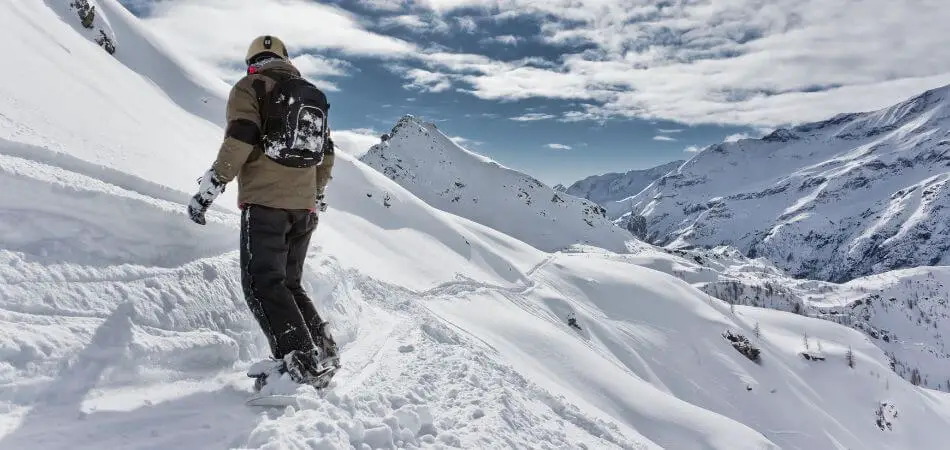
Effects Of Snowboard Length
Choosing the right snowboard length is crucial for an enjoyable ride. The length affects various aspects of your snowboarding experience. Understanding these effects helps you make an informed decision. Let’s delve into the primary effects of snowboard length.
Maneuverability
Maneuverability is how easily you can control your snowboard. Shorter snowboards are more maneuverable. They allow for quicker turns and are easier to handle. This makes them ideal for beginners and park riders.
Here are some key points about maneuverability with shorter snowboards:
- Quick Turns: Easier to make sharp and quick turns.
- Lightweight: Less weight makes it easier to handle.
- Tricks: Better for performing tricks and jumps.
On the other hand, longer snowboards offer less maneuverability but provide other benefits. Understanding these trade-offs helps you choose the right board for your style.
Here’s a comparison table:
| Snowboard Length | Maneuverability |
|---|---|
| Short | High |
| Long | Low |
Stability At High Speeds
Stability at high speeds is crucial for experienced riders. Longer snowboards provide better stability. They are more stable because they have a larger surface area.
Key benefits of longer snowboards for stability:
- Less Vibration: Reduces chatter and vibration at high speeds.
- Smooth Ride: Provides a smoother ride on uneven terrain.
- Confidence: Boosts confidence when riding fast.
Shorter snowboards might feel less stable at high speeds. They can wobble more, making them less suitable for fast downhill runs. Here’s how stability compares:
| Snowboard Length | Stability |
|---|---|
| Short | Low |
| Long | High |
Float In Powder
Float in powder refers to how well your snowboard stays on top of deep snow. Longer snowboards excel in this area. They offer more surface area, helping you float better in powder.
Benefits of longer snowboards in powder:
- Better Float: Stays on top of deep snow more effectively.
- Less Effort: Requires less effort to maintain speed and control.
- More Fun: Makes powder riding more enjoyable.
Shorter snowboards may sink more in powder, making it harder to ride. This can be tiring and less fun. Here’s a summary in a table:
| Snowboard Length | Float in Powder |
|---|---|
| Short | Low |
| Long | High |
Size Chart And Guidelines
Choosing the right snowboard size is crucial for an enjoyable and safe snowboarding experience. The perfect snowboard size depends on factors like your height, weight, and riding style. This section will provide a detailed size chart and guidelines to help you select the ideal snowboard length for your needs.
Manufacturer Recommendations
Manufacturers often provide size charts to guide you in choosing the right snowboard length. These charts are based on extensive testing and feedback. Here are some key points to consider:
- Height and Weight: Manufacturers usually list recommended snowboard lengths based on your height and weight. Make sure to check both dimensions.
- Riding Style: Freestyle, all-mountain, and powder boards have different sizing recommendations. Choose a board that suits your preferred style.
- Experience Level: Beginners might prefer shorter boards for easier maneuverability, while advanced riders might opt for longer boards for stability.
Below is an example of a typical manufacturer’s size chart:
| Rider Weight (lbs) | Snowboard Length (cm) |
|---|---|
| 80-110 | 128-136 |
| 110-140 | 135-146 |
| 140-170 | 144-152 |
| 170-200 | 150-160 |
| 200+ | 159-168 |
Always refer to the specific manufacturer’s recommendations for the best results. These guidelines are tailored to the unique design and performance characteristics of each brand’s boards.
General Sizing Guidelines
Besides manufacturer recommendations, general sizing guidelines help refine your choice. These guidelines consider factors like height, weight, and personal preference.
Here are some general tips:
- Stand the Board Up: The snowboard should reach somewhere between your chin and nose when stood up next to you.
- Weight: Heavier riders should opt for longer boards to ensure stability and control.
- Riding Style:
- Freestyle: Shorter boards are more maneuverable and better for tricks.
- All-Mountain: Medium-length boards offer a balance of stability and agility.
- Powder: Longer boards provide better floatation in deep snow.
- Experience Level: Beginners benefit from shorter boards, which are easier to control. Advanced riders might prefer longer boards for speed and stability.
Consider these general guidelines alongside manufacturer recommendations for a well-rounded decision. Balancing these aspects ensures a better snowboarding experience tailored to your needs.
Testing Different Lengths
Choosing the right snowboard length is crucial for a great experience on the slopes. Testing different lengths can help you find the perfect match for your riding style and skill level. By trying various sizes, you can determine what feels most comfortable and performs best in different conditions.
Renting Vs. Buying
Deciding whether to rent or buy a snowboard can impact your ability to test different lengths. Renting offers flexibility and allows you to try multiple sizes before committing to a purchase. This can be ideal for beginners or those still determining their preferred length.
Advantages of Renting:
- Cost-effective: Renting is usually cheaper than buying, especially for occasional riders.
- Variety: Rental shops offer a range of sizes and styles to test.
- Convenience: No need to travel with bulky gear.
Disadvantages of Renting:
- Limited availability: Popular sizes might be out of stock during peak times.
- Wear and tear: Rental boards may be more worn compared to new ones.
On the other hand, buying a snowboard provides consistency and personalization. Owning your board allows you to get used to its feel and performance. This can be beneficial for intermediate and advanced riders who have a clear preference for a specific length.
Advantages of Buying:
- Customization: Choose the exact board that matches your needs.
- Long-term investment: Saves money over time for frequent riders.
- Familiarity: Get accustomed to how your board handles.
Disadvantages of Buying:
- Higher upfront cost: Initial purchase is more expensive than renting.
- Maintenance: You are responsible for upkeep and repairs.
Ultimately, the choice between renting and buying depends on your frequency of use and willingness to experiment with different lengths.
Trial And Error On The Slopes
Testing different snowboard lengths on the slopes is the best way to find your perfect fit. Trial and error allows you to experience firsthand how each size performs. Start with a length that matches your height and weight, then adjust based on your comfort and style.
Steps for Testing:
- Rent or borrow different snowboard lengths.
- Take note of how each board feels during different maneuvers.
- Pay attention to stability, control, and ease of turning.
- Experiment with varying snow conditions to see how each length performs.
Key Factors to Observe:
- Stability: Longer boards provide more stability at high speeds, while shorter boards are easier to maneuver.
- Control: Shorter boards offer better control for tricks and park riding.
- Terrain: Consider the type of terrain you most frequently ride. Powder requires a different length compared to groomed trails.
Keeping a journal of your experiences can help. Write down your thoughts on each length and how it felt in various conditions. This can guide your final decision and ensure you choose the best snowboard length for your needs.
By testing different lengths through trial and error, you will gain valuable insights into what works best for you. Don’t be afraid to try something new and adjust until you find the perfect fit.
Adapting Length For Specific Conditions
Choosing the right snowboard length can make a huge difference in your performance on the slopes. Adapting the length of your snowboard for specific conditions is key to enjoying your ride. Whether you prefer freestyle tricks or high-speed freeride runs, adjusting the length of your snowboard can help you perform at your best.
Shorter Boards For Freestyle
For those who love to perform tricks and jumps, shorter snowboards are ideal. They offer greater maneuverability, making it easier to execute spins and flips. Here are some benefits of shorter boards for freestyle:
- Enhanced Control: Easier to turn and control in tight spaces.
- Lightweight: Lighter boards are easier to handle in the air.
- Better for Tricks: Ideal for jumps, spins, and rail slides.
Shorter snowboards typically range between 145cm to 155cm. Here’s a quick table to help you choose the right length based on your height:
| Rider Height | Snowboard Length |
|---|---|
| 5’0″ – 5’4″ | 145cm – 150cm |
| 5’5″ – 5’8″ | 150cm – 155cm |
Remember, shorter boards are less stable at high speeds. They are best suited for parks and urban environments where agility is crucial. Whether you are navigating through trees or hitting the half-pipe, a shorter board can help you nail those tricks with ease.
Longer Boards For Freeride
If you prefer racing down the mountain at high speeds, longer boards are your best bet. They provide stability and greater edge hold, making them perfect for carving and powder riding. Here are some benefits of longer boards for freeride:
- Stability: Offers more stability at high speeds.
- Better Edge Hold: Greater edge hold for carving turns.
- Float in Powder: Better floatation in deep snow.
Longer snowboards usually range from 160cm to 170cm. Here’s a quick table to help you choose the right length based on your height:
| Rider Height | Snowboard Length |
|---|---|
| 5’9″ – 6’0″ | 160cm – 165cm |
| 6’1″ – 6’4″ | 165cm – 170cm |
Keep in mind, longer boards are less maneuverable. They are best suited for open slopes and deep powder where you can make the most of their stability and edge hold. Whether you are carving down a groomed run or floating through powder, a longer board will keep you steady and in control.
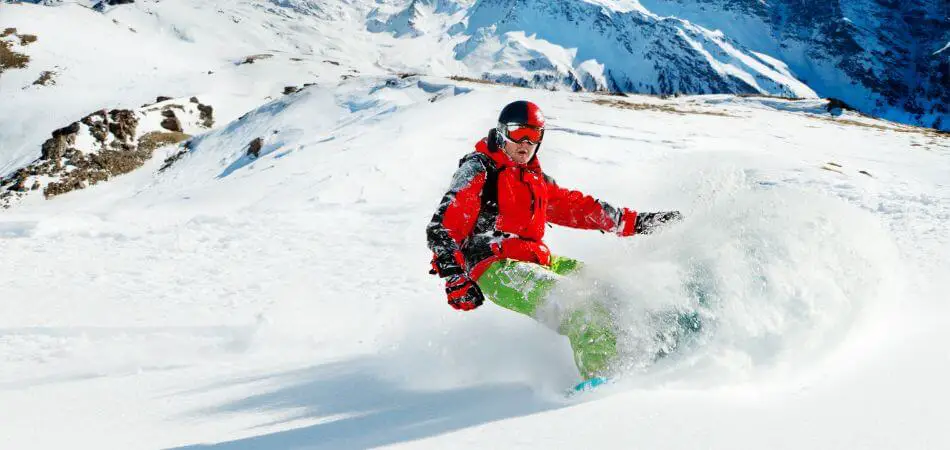
Maintenance Considerations For Different Lengths
Choosing the right snowboard length is crucial for your performance and enjoyment on the slopes. Maintenance considerations for different lengths can impact your board’s durability and ride quality. Understanding how to maintain different snowboard lengths will help you get the most out of your equipment.
Edge Maintenance
Edge maintenance is vital for keeping your snowboard in top condition. The length of your snowboard affects how you should maintain the edges. Longer snowboards have more edge surface area, which can lead to more wear and tear. Here are some tips for maintaining edges on different snowboard lengths:
- Short Snowboards: Easier to maneuver and less edge surface area. Requires frequent but less intensive edge sharpening.
- Medium Snowboards: Balanced edge maintenance. Requires regular checks and periodic sharpening.
- Long Snowboards: More edge surface area. Needs more frequent and intensive edge maintenance.
Consider these edge maintenance tips:
- Regularly inspect edges for burrs and nicks.
- Use a diamond stone to smooth out minor damage.
- Sharpen edges with a file guide for consistent angles.
- Keep edges dry to prevent rust.
Maintaining your edges ensures better grip and control on the slopes. A well-maintained edge can make the difference between a smooth ride and a rough one.
Impact On Flex And Pop
The length of your snowboard also affects its flex and pop. Flex refers to how much the board bends under pressure, while pop is how much energy the board returns. Different lengths impact these characteristics differently:
- Short Snowboards: Generally have softer flex and less pop. Easier to control for beginners and for tricks.
- Medium Snowboards: Balanced flex and pop. Suitable for all-mountain riding and versatile performance.
- Long Snowboards: Stiffer flex and more pop. Better for high-speed stability and carving.
Maintaining the flex and pop of your snowboard involves:
- Regular waxing to keep the base smooth and fast.
- Storing the board in a cool, dry place to prevent warping.
- Avoiding impacts that could damage the core or laminates.
Proper maintenance ensures your board retains its flex and pop, providing a responsive and enjoyable ride. Understanding how length impacts these characteristics helps you choose the right board and keep it in excellent condition.
Final Tips For Choosing Snowboard Length
Choosing the right snowboard length is crucial for a great experience on the slopes. Too long or too short, and it can affect your performance. These final tips for choosing snowboard length will help you make an informed decision.
Seeking Professional Advice
Talking to professionals can make your choice easier. Experts at snowboard shops have extensive knowledge. They can recommend the best size based on your needs.
Why is professional advice important?
- They understand different brands and models.
- They consider your weight, height, and skill level.
- They keep up with the latest trends and technologies.
Questions to ask a professional:
- What length suits my weight and height?
- Which board fits my riding style?
- Are there specific models you recommend?
A professional can also help you with customization options. These can include specific bindings, boots, and other gear. This ensures a perfect fit and improved performance.
Remember: always seek advice from trusted sources. This can include certified instructors, reputable shops, and experienced riders.
Considering Future Progression
Think about your future progression in snowboarding. Your skills will improve over time. Choose a snowboard that can grow with you.
Factors to consider:
- Skill level: Beginners need shorter boards. Intermediate and advanced riders can handle longer boards.
- Riding style: Freestyle riders prefer shorter boards. Freeriders and all-mountain riders may need longer boards.
- Terrain: Different terrains require different board lengths. Powder and backcountry riding need longer boards.
Why consider future progression?
| Current Skill Level | Recommended Board Length |
|---|---|
| Beginner | Shorter Board |
| Intermediate | Medium Length Board |
| Advanced | Longer Board |
Choosing a board that fits your future goals can save money. No need to buy a new board every season. A board that matches your progression can last several years.
Pro Tip: Try renting different lengths before buying. This helps in finding the perfect fit for your future needs.
Frequently Asked Questions
How Do I Choose The Right Snowboard Length?
Choose a snowboard length based on your height, weight, and skill level. Shorter boards offer agility, longer ones offer stability.
How To Measure A Snowboard For Your Height?
Stand the snowboard on its tail. The tip should reach somewhere between your chin and nose. This range ensures optimal control.
What Size Snowboard For A 5’2″ Woman?
A 5’2″ woman typically needs a snowboard between 140-145 cm. Consider weight and skill level for best fit.
How Do I Know If My Snowboard Is Too Short?
Your snowboard is too short if it feels unstable at high speeds, lacks control, or doesn’t reach your chin when standing.
Conclusion
Choosing the right snowboard length is crucial for an enjoyable ride. Consider your height, weight, and skill level. Test different lengths to find your perfect fit. Remember, the right snowboard enhances control and performance. Now, you’re ready to hit the slopes with confidence and have a fantastic snowboarding experience.


